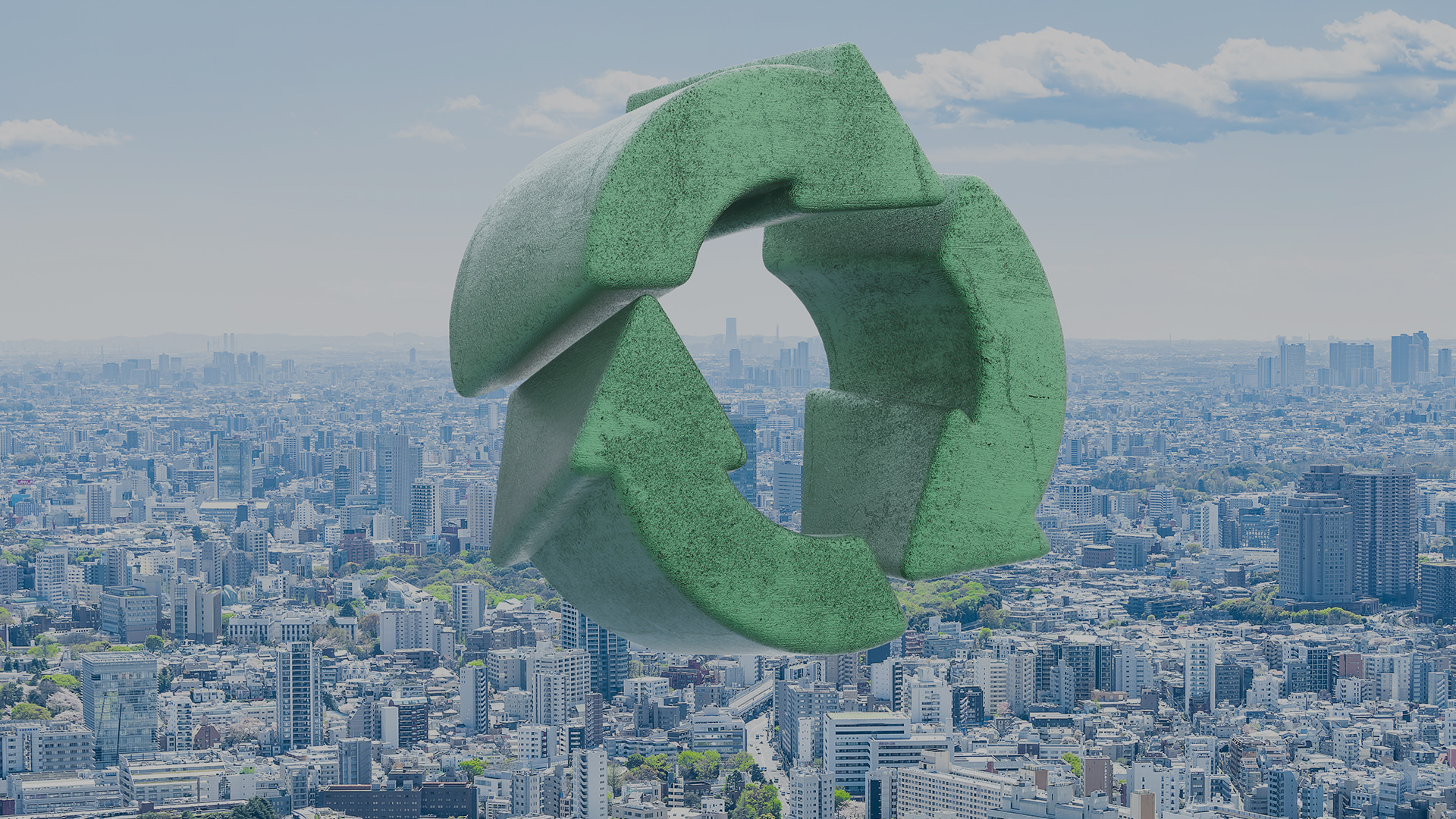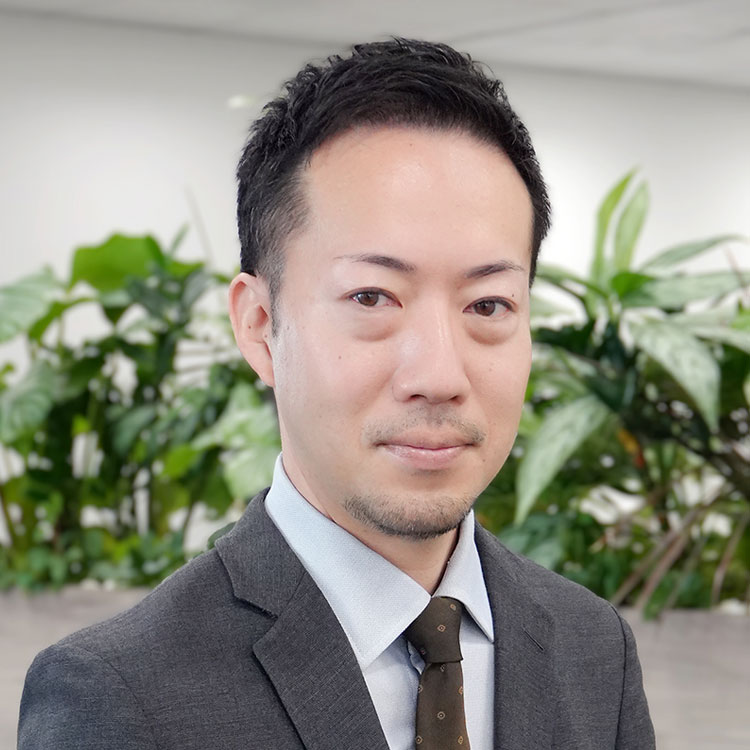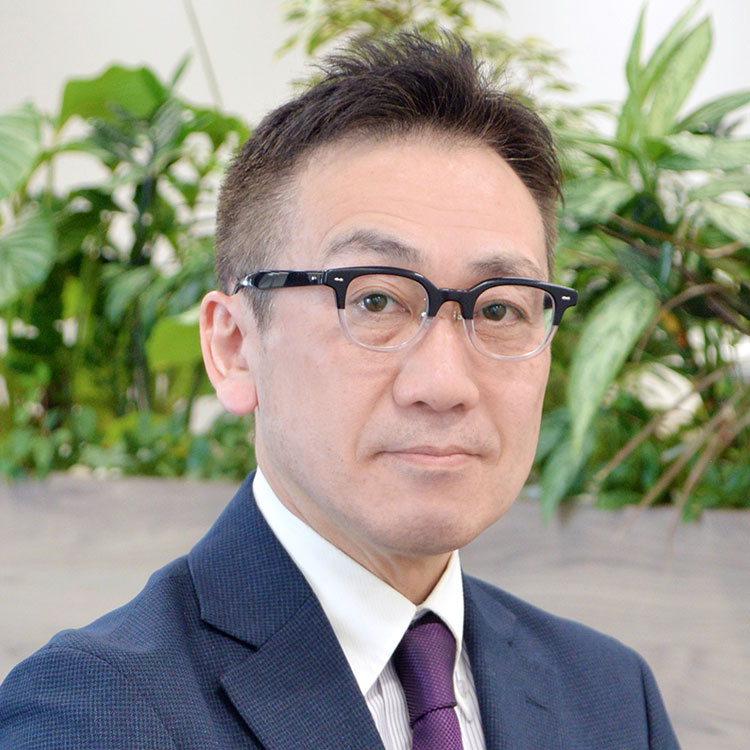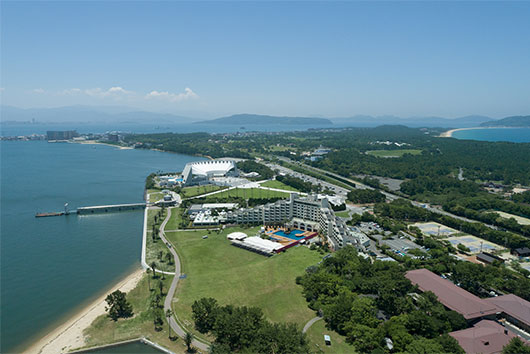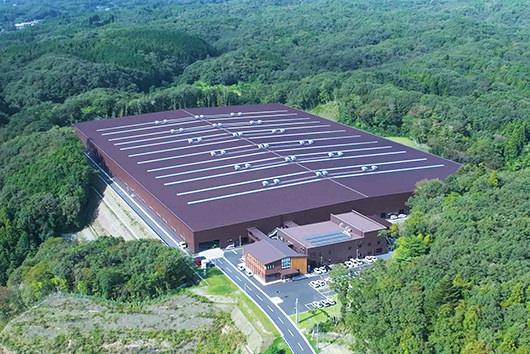Although final landfill site of industrial wastes is an important facility that supports local economic activities, its construction entails great difficulties, including the formation of consensus with local residents. It is difficult for private business sectors to construct a facility by itself, and public-involvement type construction is attracting attention. We interviewed Ko SUGIURA, General Manager of Regional Environment Business Promotion Sec., Resource Circulation Management Dept. and Toshihiko TOKITA, Technical Manager of the same section, who have a great deal of experiences in PACIFIC CONSULTANTS' construction of final landfill sites, about points to keep in mind in public-involved constructio of fifinal landfill site, and points of maintenance and operation, including business support using PFI, a typical method of PPP.
INDEX
- Current status of maintenance of final landfill site for industrial waste
- Challenges for construction of final landfill site
- Immediate maintenance of final landfill site required
- Solving local issues through public involvement
- Smooth maintenance using PFI
- PACIFIC CONSULTANTS' Initiatives
Current status of maintenance of final landfill site for industrial wastes
It was the Waste Management Act enacted in 1970 that first fully defined what waste was and how it should be disposed of. The background to this law was the increase in industrial wastes resulting from rapid economic growth and the resulting pollution. This law clearly differentiated between domestic wastes and industrial wastes, stating that industrial wastes were waste generated by business activities and that the waste producer was responsible for its disposal, and that domestic wastes were anything other than industrial wastes, including business wastes generated by offices and restaurants in addition to household wastes, and that the government (municipalities) was responsible for its disposal.
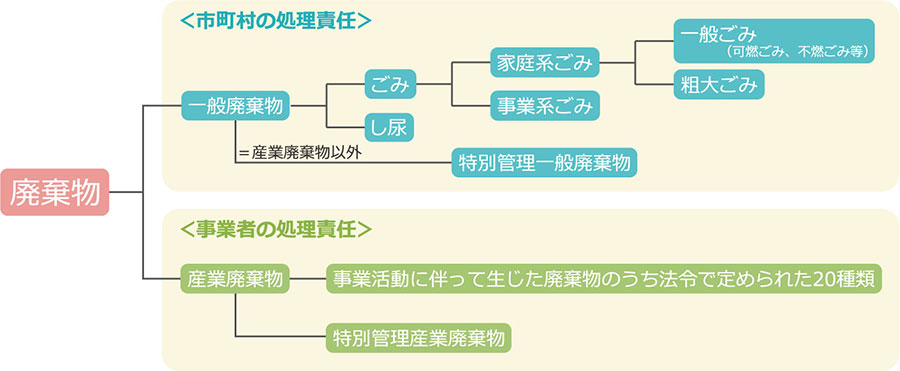
Created by processing the "Environmental White Paper 2024 Edition" (Ministry of the Environment)
However, although responsibility for disposal was clarified, the Japanese economy reached its peak of mass production and mass consumption in the 1980s and early 1990s, as the country progressed from a period of rapid economic growth to a bubble economy, and waste continued to increase. Therefore, it was considered necessary to "building a recycling-oriented society" that does not easily produce waste, and the "Basic Act on Establishing a Sound Material-Cycle Society" (Ministry of the Environment) was enacted in 2000.
It was clearly stated that the 3R initiative would be promoted, which is to first reduce the generation of waste itself, then reuse waste, and finally recycle waste. On top of that, for residues that cannot be turned back into resources, those that can be incinerated will be recovered as thermal energy, and those that cannot be incinerated will be separated, crushed, and sorted, and finally, they will be landfilled, including the cinders, with the assumption that they will be compressed, melted, dehydrated, and rendered harmless. Final landfill site became the "last bastion" of waste treatment.
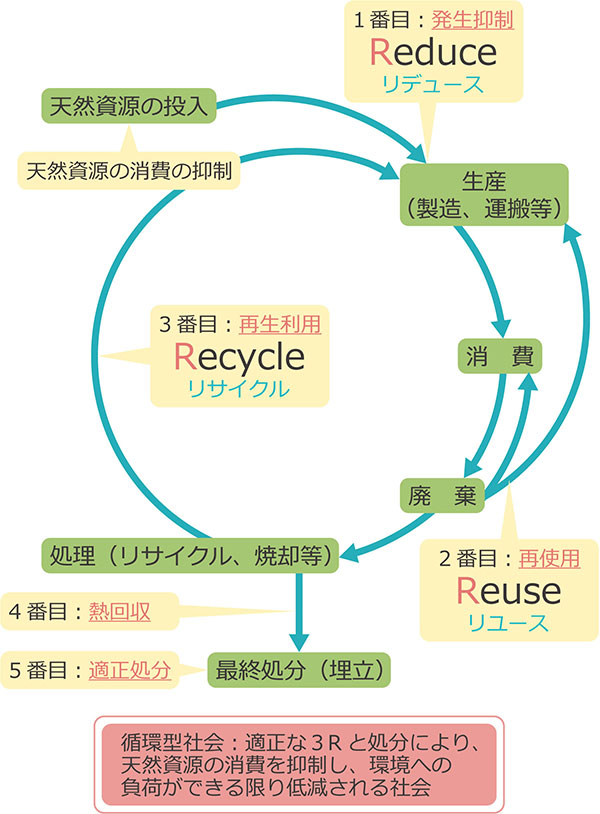
Created by processing the "Priority of Treatment for a Recycling-Oriented Society" (Ministry of the Environment)
Final landfill site are classified into three types depending on the waste that can be received there:
|
Types |
Landfill Target and Structure |
Number of Licensed Facilities |
|---|---|---|
|
Stable type final landfill site |
Stable items include waste plastics, rubber scraps, metal scraps, glass scraps, concrete scraps, ceramic scraps, and construction waste that does not have any toxic or organic matter attached. Simple facilities can be used to build enclosures and dams around the area. |
946 |
|
Managed type final landfill site |
The target waste materials are sludge, cinders, shredder dust, slag, animal waste, etc., whose concentrations of toxic substances are within the judgment criteria. To prevent groundwater contamination, the facility will be equipped with a sheet on the bottom to block water and collect wastewater from inside for wastewater treatment. |
631 |
|
Isolated type final landfill site |
The target is toxic heavy metals, etc. It will have a roof to prevent contact with water, and the inside will be a partitioned, watertight reinforced concrete container, with a structure that completely isolates toxic substances from nature. |
23 |
According to a summary by the Ministry of the Environment, as of the end of fiscal year 2022, there will be 1,557 domestic waste final landfill sites nationwide, with a remaining capacity of 96,663 m3 and an average remaining life of 23.4 years. However, of the 1,741 cities, wards, towns, and villages nationwide, 308 do not have final landfill site and outsource landfilling to private final landfill site. Meanwhile, there are 1,600 final landfill site sites for industrial wastes, with a remaining capacity of 171 million m3 and an average remaining life of 19.7 years (according to the 2024 edition of the "White Paper on the Environment, Recycling-oriented Society, and Biodiversity" (Ministry of the Environment)).
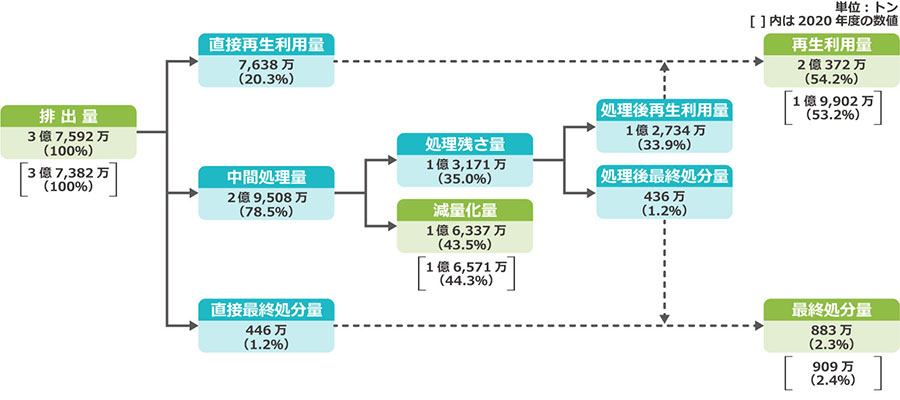
Created by processing "Survey Report on Discharge and Treatment Status of Industrial Wastes" (March 2023) (Ministry of the Environment)
Challenges for construction of final landfill site
・The average remaining years in the capital region is only 6.1 years
Looking at the remaining years alone, it seems like there is still nearly 20 years of time. However, this figure is the national average, and the situation is significantly different in urban areas. If industrial waste generated in the metropolitan area (Ibaraki, Tochigi, Gunma, Saitama, Tokyo, Chiba, Kanagawa, Yamanashi) were to be disposed of within the metropolitan area, the average remaining years would drop sharply to 6.1 years. In particular, in Tokyo and the three prefectures of Saitama, Chiba, and Kanagawa, intensive land use has progressed, making it extremely difficult to find suitable sites for final landfill sites, and there is no time to spare.
・ Final landfill site are avoided as "nuisance facilities"
Moreover, final landfill site are inevitably subject to strong opposition from local residents as "nuisance facilities." There is a term that originated in the United States, "NIMBY." It means "Not In My Back Yard," which expresses the mentality of residents who recognize the necessity of the site, but "I don't want it in my backyard." Examples of this include military bases, nuclear facilities, group homes, and crematoriums. In fact, when trying to set up final landfill site for industrial wastes, permission must be obtained from the prefectural governor who has jurisdiction over the area, but there are many cases where this is difficult due to strong opposition from residents.
・Strict environmental measures required
The reason why final landfill site are avoided as "nuisance facilities" is due to various concerns that arise from final landfill site construction and operation.
One is the impact on the environment. At landfill sites, rainwater seeps into the waste, creating leachate, which contains various toxic substances and can flow into groundwater and cause water pollution if the water barrier is insufficient. In addition, methane gas is produced during the decomposition of buried organic waste. This will also be released into the atmosphere if measures are not taken to prevent it. Methane is a powerful greenhouse gas, and there are concerns that it could accelerate climate change. Additionally, waste can contain toxic substances such as heavy metals and chemicals, which can also cause soil pollution if they seep into the soil.
・Management measures after operations begin are also important
Furthermore, there are concerns about road congestion caused by trucks transporting industrial wastes and the deterioration of the living environment due to exhaust fumes. In order to close final landfill site after it has completed its landfilling, three conditions must be met: the leachate must be of a quality that does not require treatment, the internal temperature must not be abnormally high compared to the surrounding temperature, and no gas must be emitted. For this reason, maintenance and monitoring must continue even after the site no longer accepts waste. Furthermore, even if the reclaimed material is rendered harmless, there are significant restrictions on the reuse of final landfill site, and it cannot be excavated. It can only be used to the extent that the surface layer is used as a natural park. As a result, the construction of final landfill site is perceived as generating "land that cannot be used in the future," which is a high hurdle for promoting its construction.
Urgent construction of final landfill site is required
As mentioned above, there are various issues in construction, but final landfill sites for industrial wastes are essential facilities for society, and considering the limited number of years remaining, there is an urgent need to promote their construction. If the construction of final landfill site is delayed, it will lead to the following problems:
・Increasing burden on local industries and the environment
If there is no final landfill site for industrial wastes in a region, local businesses will have to transport it to facilities in other regions for disposal. Not only will high transportation costs weaken the competitiveness of local businesses, but the resulting congestion on roads and increased CO2 emissions will be a major concern from the perspective of protecting the global environment.
・Inducing illegal dumping
Insufficient development of final landfill site may lead to illegal dumping. According to a survey by the Ministry of the Environment, there were 134 cases of illegal dumping of industrial waste in fiscal 2022 (27 more cases than the previous year), with the amount of dumped waste being 49,000 tons (27,000 tons more than the previous year), both of which are on the rise. In addition, there are 2,855 remaining cases of illegal dumping at the end of fiscal 2022, which is also an increase of 33 cases from the previous year, leading to delays in the disposal of illegal dumping.
・Disposal of disaster waste will also be difficult
Furthermore, due to the effects of climate change, the possibility of large-scale disasters occurring is increasing in every region of the country. If there are no final landfill site in the region, it will take time and effort to dispose of disaster waste, which will hinder rapid recovery and reconstruction.
Solving local issues through public involvement
The construction of final landfill site for industrial wastes involves a wide variety of tasks, from deciding on the construction site, planning, designing and constructing the facility, operating it after completion, and maintaining and managing it from the end of landfilling until decommissioning after confirming that the waste has been rendered harmless, and reuse after decommissioning. In addition, reaching a consensus with local residents is difficult, and monitoring during operation is also a labor-intensive task. However, the need for construction is only increasing, and this is why construction with public (local) involvement is required.
In fact, from around 2000, the "Waste Treatment Center" system, in which the public sector utilizes private capital and human resources to develop waste treatment facilities, was expanded and national subsidies began to be provided. Since then, the number of publicly-involved final landfill site has continued to increase, and as of April 2022, there are 82 such sites in 36 prefectures across the country (" Industrial Waste Administrative Organization Survey Report 2021's Results" (Ministry of the Environment)).
Only local governments can take on the task of not only carrying out thorough environmental assessments and taking thorough environmental measures at facilities, but also making efforts to engage in dialogue with residents to dispel any concerns they may have.
In addition, the development of the local economy through the development of local business sectors and the attraction of new industries, and the improvement of the region's resilience by establishing a smooth system for the disposal of disaster waste in the event of a disaster, all of which will benefit local residents. In the sense that securing these is the responsibility of the local government, the involvement of local governments in the development of industrial wastes final landfill site is of great significance.
Smooth maintenance using PFI
However, without exception, local governments have tight finances, making it difficult for them to independently develop and directly manage final landfill site. In order to secure business funds, it has become necessary to consider PPP mechanisms such as PFI (Private Finance Initiative).
PFI is a method for implementing public works projects, utilizing the funds, management capabilities, and technical skills of the private sector to design, construct, renovate, renew, maintain, and operate public facilities, etc. By adopting the PFI method, risk management for the entire project can be carried out efficiently, and it is expected that project costs will be reduced by handling all or part of the design, construction, maintenance, and operation as an integrated whole.
PACIFIC CONSULTANTS' Initiatives
Since the enactment of the Waste Management Act in 1970, which stipulated that the collection, transportation, and disposal of general waste was the exclusive responsibility of local governments, PACIFIC CONSULTANTS has expanded its consulting business nationwide in relation to the construction of the increasing number of intermediate treatment facilities and final landfill site only do we have a high level of expertise in the location, ground, and geological surveys and environmental assessments involved in selecting suitable sites for facilities, but we also have a planning and design department for various structures, and have accumulated a wealth of experience in communicating with residents and building consensus, which has led to many success stories across the country, and we continue to hold the top position (*) in the waste sector of construction consulting firms (including the construction of intermediate treatment plants).
(*) Construction Consultant Financial Results Ranking 2024 (Nikkei Construction, April 2024 issued)
We have been involved in the initial master plan for Eco Green Tochigi, Tochigi Prefecture's managed industrial wastes final landfill site, which began operation in September 2023. We proposed a PFI system for the largest closed-type final disposal site in Honshu, incorporating cutting-edge environmental considerations, such as covering the entire 600,000 m3 final landfill site with a roof and treating and reusing all water that comes into contact with waste within the facility. Our unique PFI system, called "profit sharing," which encourages the operator to make partial self-sufficiency as a business model, was adopted. We were also involved in the entire project process, from the master plan to design, construction, and operation, including holding information sessions to build consensus among residents, which was essential for the plan's decision, and we contributed to the construction of final landfill site, a long-cherished dream of the prefecture for 30 years.
PACIFIC CONSULTANTS intends to further strengthen our efforts in the construction of final landfill site, based on its comprehensive capabilities as a consultant and its many years of experience in providing support.



